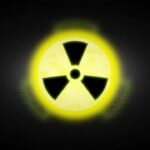In the 21st century, rare earth elements (REEs) have become indispensable components in a wide range of technologies that power our everyday lives. From smartphones and electric vehicles to wind turbines and defense systems, REEs enable modern innovations and contribute to global efforts for sustainability and clean energy. However, their mining and extraction present significant environmental, economic, and geopolitical challenges. Recycling rare earth metals has therefore emerged as a critical strategy, and in recent years, ionic liquids—a novel class of green solvents—have shown remarkable potential to transform the way we recover these precious resources. Together, ionic liquids and the principles of the circular economy offer a pathway toward more sustainable and resilient supply chains for rare earths.
The Importance of Recycling Rare Earth Elements
Rare earth elements, despite their name, are relatively abundant in the Earth’s crust. However, they rarely occur in concentrated deposits, making mining a complex, energy-intensive, and environmentally damaging process. Extracting REEs often involves heavy use of hazardous chemicals, generates large amounts of toxic waste, and leads to severe ecological disruption. Additionally, global supply chains for rare earth metals are geographically concentrated in a few countries, which poses a significant risk for industries dependent on these materials.
At the same time, the recycling rates for REEs remain shockingly low. It is estimated that less than 1% of rare earth metals are recovered from end-of-life products such as electronics, permanent magnets, and fluorescent lamps. This low recovery rate stems from several factors: the small quantities of REEs in each product, the chemical complexity of separating them from other components, and the lack of efficient and economically viable recycling technologies.
This gap between demand and supply, combined with the environmental impact of mining, highlights the urgent need to develop innovative recycling methods. Doing so aligns perfectly with the goals of the circular economy—a model designed to minimize waste, conserve resources, and create closed-loop systems where materials are continuously reused.
What Are Ionic Liquids and Why Are They a Game-Changer?
Ionic liquids (ILs) are salts composed entirely of ions—positively charged cations and negatively charged anions—that exist in a liquid state at or near room temperature. Unlike traditional solvents, which tend to be volatile, flammable, and environmentally harmful, ionic liquids have a suite of green chemistry attributes that make them ideal for sustainable industrial processes.
Key advantages of ionic liquids include:
Non-volatility: They have negligible vapor pressure, which means they do not evaporate into the atmosphere, reducing pollution.
Non-flammability: Their chemical stability lowers fire hazards.
Thermal and chemical stability: They can withstand high temperatures and harsh chemical environments.
Reusability: Ionic liquids can often be recovered and reused multiple times without significant degradation.
Tunability: By altering the chemical structure of the ions, ionic liquids can be tailored to selectively dissolve or bind specific metals.
This tunability is particularly important for recycling rare earth metals, which often require precise separation due to their similar chemical properties.
How Ionic Liquids Are Used to Recycle Rare Earth Metals
The process of recycling REEs using ionic liquids generally involves a few key steps:
1. Leaching
The first step involves breaking down the end-of-life product, such as a discarded magnet or fluorescent lamp powder, to liberate the rare earth metals. The solid waste is treated with an ionic liquid solution, which selectively dissolves the targeted rare earth metals.
Unlike traditional acidic leaching processes that use strong mineral acids such as sulfuric or hydrochloric acid—often producing hazardous waste—ionic liquids can operate under milder conditions, reducing corrosion and environmental impact.
2. Metal Separation
Once dissolved, the rare earth metals must be separated from one another and from other metals present in the solution. This is notoriously difficult because many rare earth elements share very similar chemical characteristics.
Ionic liquids can be designed to selectively extract particular rare earth ions. Specialized ILs can bind preferentially to one element, allowing its separation from mixtures containing others. For example, selective separation of neodymium from dysprosium or samarium from cobalt has been demonstrated with high efficiency.
3. Recovery and Regeneration
After separation, the rare earth metals are recovered from the ionic liquid phase, often through precipitation or reduction processes, resulting in purified metals ready for reuse in manufacturing new products.
Importantly, ionic liquids can be regenerated and reused in subsequent recycling cycles, which minimizes chemical waste and reduces the overall environmental footprint.
Recent Advances and Achievements in Ionic Liquid-Based Recycling
Laboratory studies have shown promising results. Some research groups have achieved separation efficiencies exceeding 99%, effectively isolating individual rare earth metals from complex mixtures. These successes not only demonstrate the potential of ionic liquids to replace conventional solvent extraction methods but also highlight their advantages in terms of selectivity and sustainability.
Moreover, advancements in multifunctional ionic liquids have reduced the number of necessary separation stages dramatically—from over a hundred steps in traditional hydrometallurgical processes to fewer than twenty with ionic liquids. This streamlining translates to reduced energy consumption, fewer chemicals, and shorter processing times.
One of the remarkable breakthroughs has been the development of multifunctional amide ionic liquids (MAILs), which operate under mild pH conditions and dramatically improve selectivity while reducing the reliance on corrosive acids. MAILs are designed to specifically target rare earth metals in waste streams, improving efficiency and lowering environmental impact.
At the pilot scale, several projects have begun implementing ionic liquid recycling techniques on industrial magnet waste, with encouraging results. This progress signals a pathway toward commercial viability.
Challenges in Scaling Up Ionic Liquid Recycling Technologies
Despite the clear advantages, the road to wide-scale adoption of ionic liquid-based recycling faces several hurdles.
High Viscosity
Ionic liquids tend to be more viscous than traditional solvents. This viscosity slows down mass transfer during metal extraction and separation, complicating process design and scaling. Overcoming this requires advances in reactor engineering and process optimization to maintain efficiency at larger volumes.
Cost Considerations
While ionic liquids can be designed from inexpensive raw materials, many tailored ionic liquids remain costly to produce at scale. The economic viability of ionic liquid recycling will depend on balancing these costs with gains in efficiency, waste reduction, and metal recovery yields.
Integration into Existing Infrastructure
Most recycling facilities today use traditional hydrometallurgical processes. Transitioning to ionic liquid-based systems requires investments in new equipment and operator training. Additionally, regulatory approvals and market acceptance will influence the pace of adoption.
The Role of Ionic Liquids in the Circular Economy
The circular economy aims to decouple economic growth from resource consumption by closing the loop on material flows. This means designing products and systems that prioritize reuse, refurbishment, and recycling, ultimately minimizing waste and environmental harm.
Recycling rare earth metals with ionic liquids perfectly aligns with this vision by:
Reducing reliance on primary mining: Recycling limits the environmental and social damage of mining operations.
Lowering waste and pollution: Using ILs reduces hazardous chemical consumption and waste generation.
Securing supply chains: Efficient recycling diminishes geopolitical risks related to rare earth sourcing.
Preserving material quality: High-purity metal recovery ensures recycled materials meet stringent manufacturing standards.
Supporting sustainable innovation: Technologies like electric vehicles and renewable energy systems depend on reliable rare earth supplies.
Through these contributions, ionic liquid recycling helps create a more resilient, environmentally responsible supply chain that supports green technology deployment.
Emerging Commercial and Research Developments
Several companies and research institutions worldwide are pushing the boundaries of ionic liquid recycling technology.
For example, spin-off companies from university research are commercializing ionic liquid-based extraction processes, recovering high-purity rare earth metals from industrial magnet waste. These companies aim to supply recycled metals for electric motor manufacturing, highlighting the growing demand and market interest.
Research organizations continue to explore new ionic liquid formulations to enhance selectivity and performance, as well as to address challenges such as viscosity and scalability. Collaborative projects combining chemistry, engineering, and environmental science are accelerating progress toward commercial application.
Looking Ahead: The Future of REE Recycling
As global demand for rare earth metals continues to surge—driven by electrification, digitalization, and clean energy transitions—the need for sustainable recycling technologies grows ever more urgent.
Ionic liquids represent a promising solution that addresses many shortcomings of traditional recycling methods. Their unique properties enable safer, greener, and more efficient recovery of critical metals from complex waste streams.
However, realizing the full potential of ionic liquids will require continued innovation, cross-sector collaboration, and supportive policies that encourage circular practices.
In the near future, we can expect:
Improved ionic liquid formulations optimized for specific rare earths and feedstock types.
Process intensification to reduce energy use and increase throughput.
Integration with other recycling technologies, such as mechanical separation and bioleaching.
Scaling up to commercial plants, demonstrating economic viability and environmental benefits.
Policy incentives and standards to drive adoption and promote responsible sourcing.
Together, these advances will help close the loop on rare earth metals and embed their recovery firmly within the circular economy.
Conclusion
Rare earth elements are foundational to modern technology and the transition to a sustainable future. Yet, the current extraction and supply model is environmentally damaging and geopolitically fragile. Recycling rare earth metals is a vital strategy to mitigate these challenges.
Ionic liquids offer a revolutionary approach to recycling by combining green chemistry principles with high selectivity and efficiency. While challenges remain, the progress to date suggests that ionic liquid-based recycling can become a cornerstone of the circular economy for rare earth metals.
By investing in and adopting such innovative technologies, industries and governments can foster a more sustainable, secure, and resilient supply of rare earth elements—ensuring that these precious metals continue to power innovation without costing the Earth.




